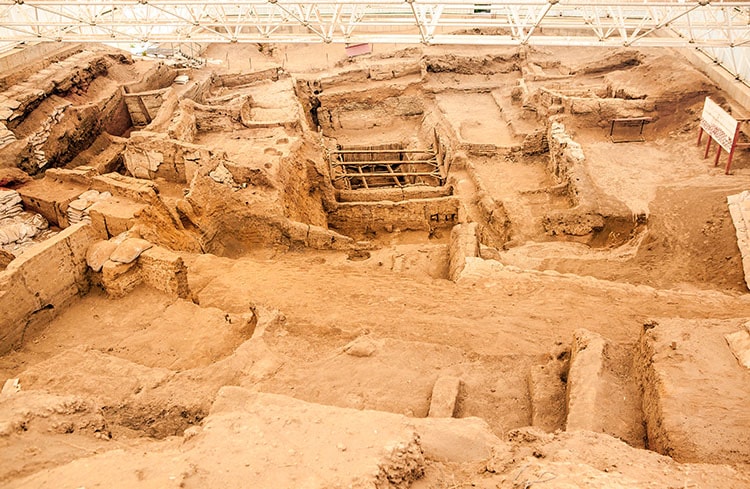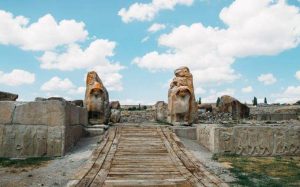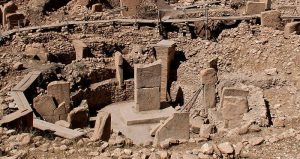Ancient Cities in Turkey
The ancient site of Çatalhöyük was first discovered in the late 1950s and excavated by James Mellaart between 1961 and 1965. The site rapidly became famous internationally due to the large size and dense occupation of the settlement, as well as the spectacular wall paintings and other art that was uncovered inside the houses.
Since 1993 an international team of archaeologists, led by Ian Hodder, has been carrying out new excavations and research, in order to shed more light on the people that inhabited the site.
The Çumra plain in which the ancient city of Çatalhöyük is situated, is rich with the evidence of the past from many periods. Otherwise very flat, the landscape is dotted with mounds of varying sizes. These mounds vary from the extremely large to being no more than slight swells in the ground. As well as this more obvious evidence, them are large areas littered with pottery and tiles, and still more sites are being exposed every day by the continuous work on the implementation of concrete drainage channels.
Çatalhöyük is an example of the important Anatolian contribution to the development of early (ancient) societies. A site of this importance for Turkish and global heritage needs careful conservation and presentation to the public. Catalhoyuk poses problems of conservation of mud brick and wall plaster, and problems of site management which have a wider applicability to many sites in the Eastern Mediterranean.
Excavated by James Mellaart in the early 1960s, the site has been widely recognised as of unique international significance. The popular Collins guide to Turkey is one of many that describe Çatalhöyük as ‘probably the most important archaeological site in Turkey’. It is one of the first urban centres in the world (at 7400BC) and it has the first wall paintings and mural art. The spectacular art provides a direct window into life 9000 years ago, and the site is an internationally important key for our understanding of the origins of agriculture and civilisation.
The aims of the current international project at Çatalhöyük involve full-scale modern archaeological excavation and conservation, and promotion of the site for visitor access. Archaeological excavation and conservation by an international team started in 1993 under the direction of Dr Ian Hodder of the Çatalhöyük Research Project, Stanford University, under the auspices of the British Institute of Archaeology at Ankara, with a permit from the Turkish Ministry of Culture and Tourism, and in close collaboration with the University of California at Berkeley, London University, Istanbul University, Selcuk University, and Poznan University. The work aims at extensive uncovering of new areas of the site and the recovery, conservation and presentation of paintings and sculpture. The work is planned to continue over 25 years.
The ultimate aim is to provide the Turkish Ministry of Culture and Tourism with a well planned heritage site. Visitors are able to experience the site in a number of ways. A conservation laboratory has been built and the latest techniques applied. The aim is that the conserved wall paintings, sculptures, textiles, wooden and ceramic artifacts will be placed on display in a site museum, enhanced by virtual reality techniques and interactive video. Replicas of some of the paintings are being placed back in conserved houses on the site, under a range of shelters. Part of the site is being covered so that the ancient houses are protected and so that visitors can walk around a Neolithic village. An experimental house has been built for tourist entry. By providing a range of visitor experiences the full heritage potential of the site can begin to be exploited.The main research direction is to place the paintings and symbolism within a full environmental, economic and social context. Central questions concern the origins of the site and its early development, social and economic organisation and variation within the community, the reasons for the adoption and intensification of agriculture, the social context for the early use of pottery, temporal trends in the life of the community, trade and relations with other sites in the region.




